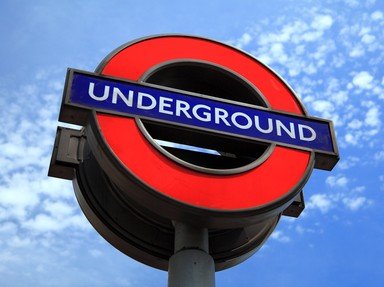Quiz Answer Key and Fun Facts
1. What station is a compound of:
a "French" brass musical instrument + a religious building, typically frequented on a Sunday?
2. Which station, served by no less than four lines, can be formed from:
a fell + a door in a fence?
3. Heading out to the eastern reaches of London, which station is:
a dog making its noise or British slang for crazy + a straight edge of a polygon?
4. Here's two more words to smush together. What station do you get from:
Hudson, Botany, Biscay and Bengal, for instance + H2O?
5. Jack the Ripper may be gone, but which station is a compound word formed of:
the albumen of an egg + a small place of worship, usually a room within a larger building?
6. Where are we off to now, if you combine:
Barbie's original beau + 2000 lbs (US) or 2240 lbs (UK)?
7. All aboard! What station comes about as a result of combining:
the place on a golf course where putting occurs + maker of the Model T car?
8. We're almost at our final destination. Where are we if we're at a station whose name is formed of:
a supply of something + a deep, vertical shaft, usually filled with water?
9. A rather regal-sounding stop, what do we get by combining:
Elizabeth, Mary and Victoria, for example + inter?
10. Here's another station, split across four Underground lines. If you combine:
the more common name for the bone called the malleus + a craftsman,
what do you get?
Source: Author
eburge
This quiz was reviewed by FunTrivia editor
stedman before going online.
Any errors found in FunTrivia content are routinely corrected through our feedback system.
